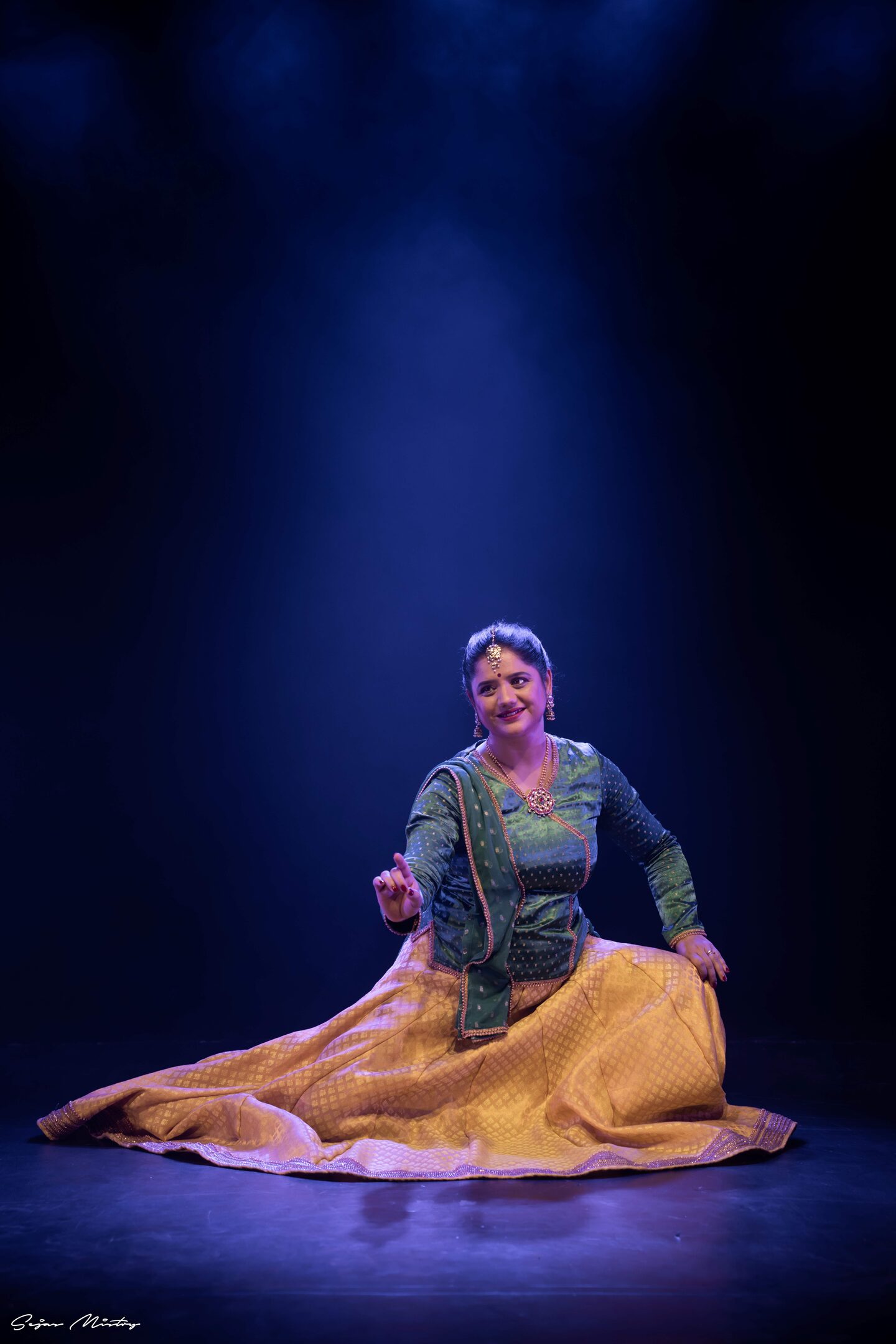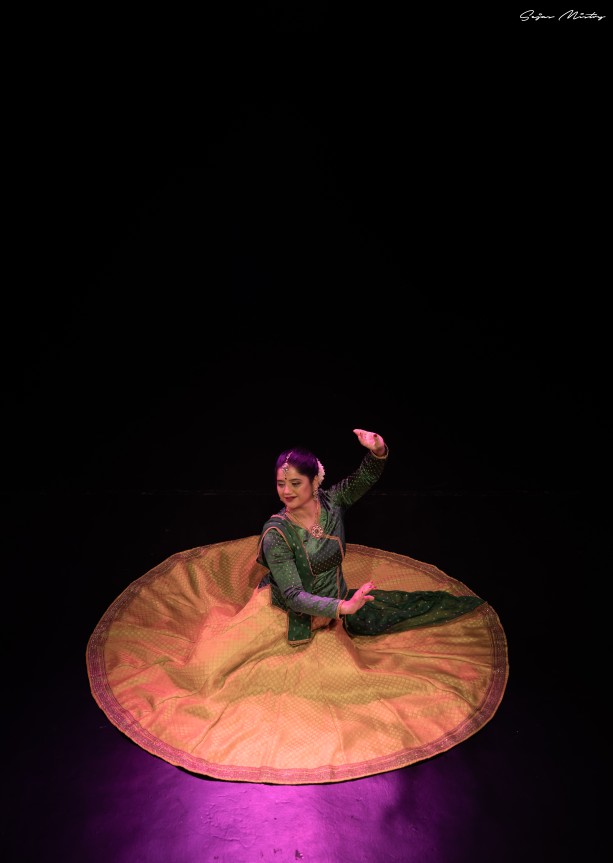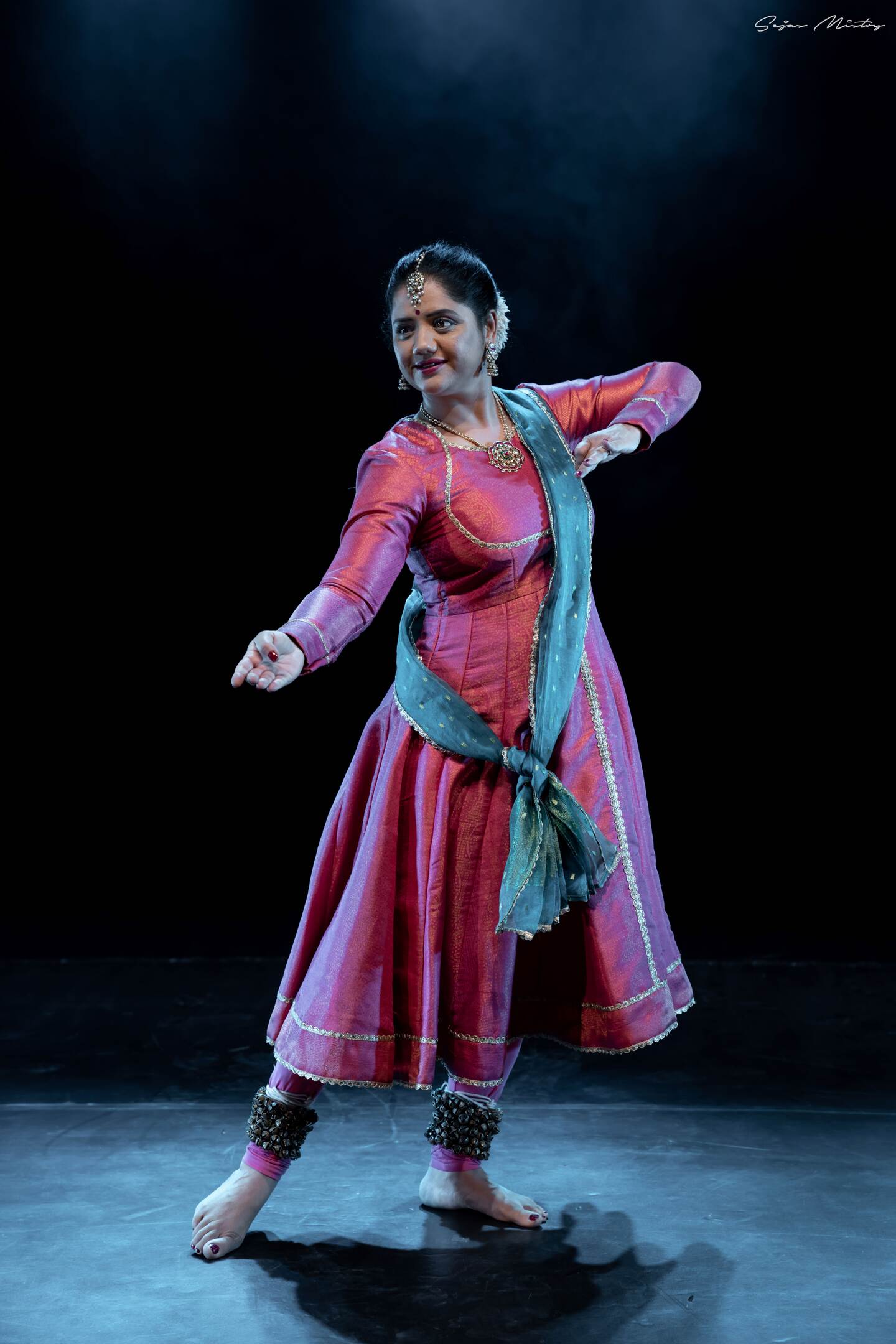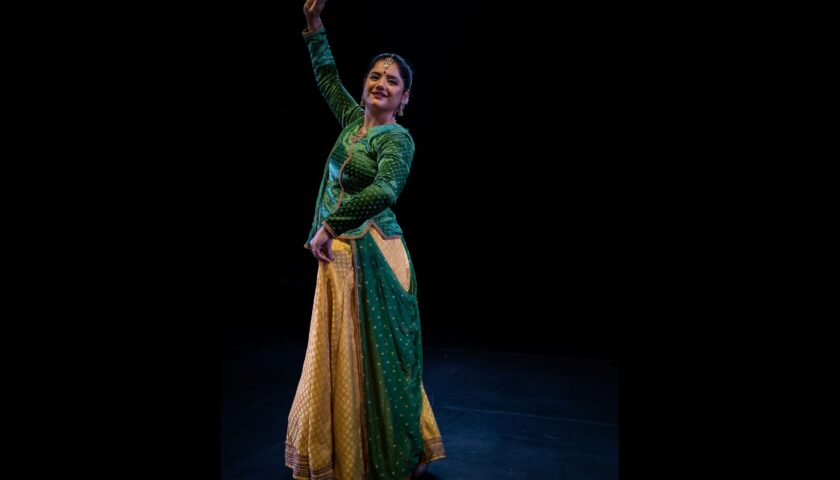On a warm summer afternoon in Hyderabad, Mukti Shri begins her daily riyaz. Anklets — hundreds of tiny brass bells — are tied snugly around her ankles. The room is silent for a breath, until the first sharp stamp lands on the wooden floor. In that instant, the centuries-old heartbeat of Kathak echoes again.
For Mukti, this is not mere practice — it is worship, discipline, and dialogue with an art form she has carried with her across continents.

The Moped and the Guru
Her journey began at the age of six in a small class run by her first Guru, Mullah Sir. She remembers summers spent riding on the back of his old MAT moped, from one class to another. “He gave me my love for riyaz,” she says. “And he did something rare — he encouraged me to go learn from other Gurus when he felt I was ready. That’s a teacher’s true generosity.”
That generosity led her to Vidushi Smt. Shama Bhate at Nad Roop in Pune, where she would train for 12 years — from nine in the morning to eight at night, with only a short break. Shama Tai, as her disciples call her, brought discipline to the point of devotion. “She taught us every nuance — hours of practice on a single phrase — and brought in Gurus from across India, giving us a rich vocabulary of styles.”
Shama Tai also nudged her students towards openness. Jazz and contemporary music sessions became part of their training, laying the foundation for Mukti’s future collaborations.

A Passport Stamped in Rhythm
Her professional journey took her first to Bangkok, as an Expert Teacher for the Indian Activity Centre, supported by the Indian Women’s Club and the Indian Embassy. Four years later, she moved to the UK, performing across Britain and Europe.
From Chinese musicians in Beijing to jazz artists in Vienna, her collaborations blurred cultural boundaries. One of her career’s high points came when she shared the stage with percussion legend Trilok Gurtu at Switzerland’s International Paleo Festival and the World Percussion Festival in Istanbul.
Despite the acclaim, the call of India was strong. “I wanted to be at the core of the Indian classical music and dance scene again,” she says. Hyderabad is now her base — a city that allows her to perform nationally, travel abroad, and continue advanced training with the legendary Taal Yogi Padmashri Pandit Suresh Talwalkar.

Kathak: Then and Now
“Kathak today is vibrant, evolving — but also different,” Mukti reflects. “Modern dancers blend tradition with contemporary music, and social media gives instant reach. But the short video format can’t build the stamina or depth needed for a 45-minute solo.”
She contrasts this with the Gurukul system, where years of rigorous training were an end in themselves, and performance was rare. “Today’s world demands instant, glamorous output — but we must guard the depth.”
A Moment with a Maestro
Among her most cherished memories is performing in the presence of Ustad Zakir Hussain in Mumbai. “Receiving his blessings was a moment I will never forget,” she says. Through ArtHub — the cultural platform she co-runs with her husband, Dr. Shrinivas Rao — she has hosted the maestro in Hyderabad twice. “His humility, despite his genius, is what stays with you.”
For the Next Generation
Mukti’s advice for young dancers is both practical and soulful:
- Train for the stamina of a full-length solo.
- Approach Kathak like an ocean — the deeper you go, the more jewels you will find.
- Use social media, but remember to dance for yourself first.

The ArtHub Vision
At ArtHub, Mukti is more than an artist; she is a curator, organiser, and advocate. The platform works to identify the unseen challenges facing Indian classical arts and create solutions so they can thrive both in India and abroad.
Her journey — from the back of a moped in her Guru’s care, to global stages, to shaping the cultural ecosystem — is proof that Kathak is not a relic of the past. It is alive, breathing, and capable of carrying the weight of centuries while adapting to the rhythm of today.
And when the ghungroos chime in her Hyderabad studio, one can hear not just the story of a dancer, but the pulse of a tradition that refuses to stand still.




